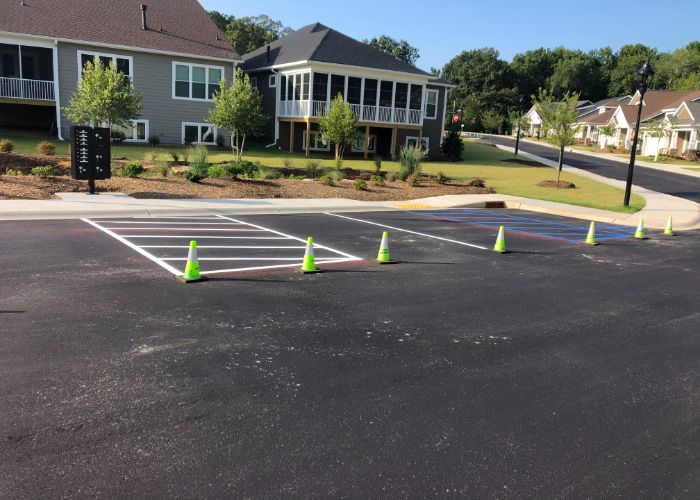How Proper Parking Lot Asphalt striping Supports Inclusivity and Compliance
Properly striped parking lots are more than just organized spaces for vehicles; they are crucial components of inclusivity and compliance with accessibility standards. Accessibility in parking lots is a fundamental aspect of ensuring equal access for all individuals, regardless of their physical abilities. By adhering to specific guidelines for asphalt striping and signage, parking lot managers and owners play a pivotal role in creating environments that accommodate everyone, including those with disabilities. Firstly, clear and well-maintained asphalt striping enhances accessibility by delineating designated accessible parking spots. These spots are strategically placed closer to building entrances to minimize the distance individuals with disabilities must travel. The asphalt striping itself must comply with dimensions specified by accessibility regulations, ensuring there is adequate space for wheelchair users to enter and exit their vehicles comfortably. Properly marked access aisles adjacent to these spots prevent obstruction and provide additional room for wheelchair ramps or lifts.

Moreover, the use of contrasting colors in asphalt striping is essential for visibility, especially for individuals with visual impairments. According to accessibility guidelines, accessible parking spots should be marked with bright, contrasting colors to differentiate them clearly from regular parking spaces. This visual distinction aids in navigation and reduces confusion, making it easier for drivers and pedestrians to identify accessible parking areas from a distance. In addition to enhancing accessibility, compliant asphalt striping also ensures legal compliance with local and national accessibility regulations. Failure to maintain proper asphalt striping and signage not only poses logistical challenges but also carries legal repercussions. By following established guidelines, property owners mitigate the risk of fines and legal disputes while demonstrating a commitment to inclusivity and accessibility. Furthermore, well-maintained asphalt striping contributes to overall safety within parking facilities. Clear markings help regulate traffic flow and reduce the likelihood of accidents or congestion, benefiting all users of the parking lot.
This is particularly important in busy or densely populated areas where efficient use of space is crucial. Beyond regulatory compliance and safety, properly striped parking lots contribute to a positive user experience. They reflect an organization’s dedication to inclusivity and accessibility, fostering goodwill among customers, employees, and visitors alike. Businesses and public institutions that prioritize accessibility through clear asphalt striping send a powerful message of respect and consideration for all members of the community. In conclusion, proper asphalt striping jacksonville fl is far more than a cosmetic consideration; it is a critical element in promoting inclusivity, ensuring compliance with accessibility standards, enhancing safety, and improving the overall user experience. By investing in clear, well-maintained asphalt striping that meets established guidelines, property owners and managers demonstrate their commitment to accessibility and create environments that are welcoming and accessible to everyone. Whether in retail settings, office complexes, healthcare facilities, or public spaces, accessible parking is not just a legal requirement but a moral imperative that benefits society as a whole. Therefore, attention to detail in parking lot asphalt striping is not only prudent but also essential for creating environments where everyone can thrive.